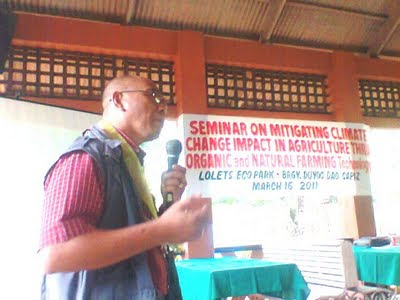To help promote accelerated development of coconut and other palm oil industry for farmers in particular and the entire nation in general, the following are the projected goals of CBTU:
Mission
To complement on-going national research program for coconut varietal improvement and improved agro-technological systems that will suit the conditions of Panay and nearby areas for the systematic development of coconut in the region.
Goals and Objectives
The Coconut Breeding and Trials Unit (CBTU) continually seeks to:
- breed various coconut varieties of PCA and select suitable planting materials for conservation, replication and distribution;
- facilitate the release of planting materials for small coconut farmers organizations (SCFOs);
- record and release observations on coconut growth and development conducted in Capiz State University and compare them with those done in other locations;
- conduct research activities and demonstration trials on to coconut-based farming systems, integrated pest management and cultural management practices in the area; and
- establish and maintain a databank of all existing coconut collections.
I |
n a ten-year development program for the coconut industry proposed by then Panay State Polytechnic College (PSPC), the University sought to replicate of the coconut germplasm collection from the Philippine Coconut Authority’s Zamboanga Research Center (PCA ZRC).
To preserve the collection, Deputy Administrator for Research Nebuchadnezzar P. Arboleda, through the support of Dr. Ernesto V. Botin, then PSPC President, conceptualized the Coconut Breeding Trials Unit (CBTU), the first of its kind authorized by PCA’s research branch.
After an agreement was entered into between PSPC and PCA in 1991, CBTU was formally implemented in 1993. Through the years, CBTU propelled its operations, even engaging in active participations with partners and stakeholders until PSPC evolved into what is now Capiz State University.
Then, in 1999, under the leadership of President Rochellir D. Dadivas, CBTU was formally cited to have the biggest collection of coconut genetic resources among all state colleges and universities in the world. This was certified on May 10, 1999 by Carlos B. Carpio, PCA’s Deputy Administrator for Research and Development. At the time, Carpio was a member of the Malaysia-based International Coconut Genetic Resources Network (COGENT) and the Bureau for the Development of Research in the Tropical Oil Crops (BUROTROP) based in France.
After some two decades, the Coconut Breeding and Trials Unit (CBTU) has maintained 100 coconut varieties since its inception and implementation. It also continues to provide varieties both for study and commercial purposes.
The Capiz State University has since maintained this profitable project for the University’s Research department while it continually sets itself to provide livelihood alternatives to the people in the community.
Project Rationale
Coconut plantings in the Panay Island are comparatively smaller than in other Visayan islands. Conditions prevailing here allow opportunities for evaluating and conserving genetic resources that are already available and testing them in a range of environmental conditions.
- The Island represents three coconut suitability classes, namely: a) highly suitable (Capiz, Aklan, Northern Antique, Northern Iloilo); b) suitable (Iloilo and Guimaras) and fairly suitable (Southern Antique)
- CBTU makes these test materials available for access, distribution and monitoring.
- Absence of typhoons and other climatic disturbances makes the area an ideal collection site. Except common diseases of coconut, there was no reported disease of unknown etiology.
- CBTU can sustain a few varieties in greater number to serve as immediate sources of improved planting materials following controlled pollination for distribution to nearby areas.
- Duplication of valuable coconut collections is necessary to safeguard the materials from genetic losses.
Site Location
Situated some 107 kilometers from Iloilo City, the Western Visayas regional hub and some 43 kilometers off Roxas City, Capiz’s provincial capital, the Coconut Breeding and Trials Unit (CBTU) based at the Capiz State University Burias Campus is enclosed between barangays Burias and Caidquid, Mambusao, Capiz. The said location is bordered by the mountains of Jamindan, Capiz in the west; Altavas, Aklan in the north; Burias in the east, and barangay Caidquid in the south.
Projects and Activities
Varietal collection and development
Nursery management
Plantation management
Coconut ecology and physiology
Farming systems
Crop protection
Product development and processing
By-product utilization
Post-harvest handling and storage
Soil fertility management and development
Socioeconomics, marketing and promotion
Production
Increased seed nuts production and generated income
Improved production of complimentary crops and livestock
Production and distribution of high yielding seed nuts and seedlings to coconut farmers
Demonstration of Coconut-Based Farming Systems (CBFS)
Conduct of field days and harvest festival for coconut farmers and enthusiasts
Participation in R&D activities with WESVARRDEC, among others
CBFS awareness campaigns for farmers resulting in increased demand for planting material
CBTU is used as a social and field laboratory by Capiz State University students and faculty and those from other institutions
Site Profile*
Total Project Area | 64 hectares | ||
Area Planted To Collections | 36:67 has. | ||
Water-Logged Areas & Rice Fields | 5 hectares | ||
Border Rows And Vacant Areas Due To Blocking Design | 24.33 hectares | ||
Average Area Planted Variety | 0.40 hectare | ||
Total Germplasm Collection | 86 | ||
Tall | Dwarf | Hybrid | |
52 | 24 | 12 | |
Total Existing Palms | |||
Tall | Dwarf | Hybrid | |
2,412 | 1,091 | 953 | |
Borders | 612 | ||
*Data as of October 2002















